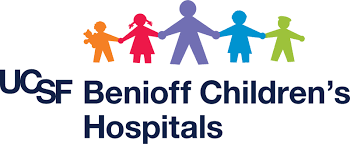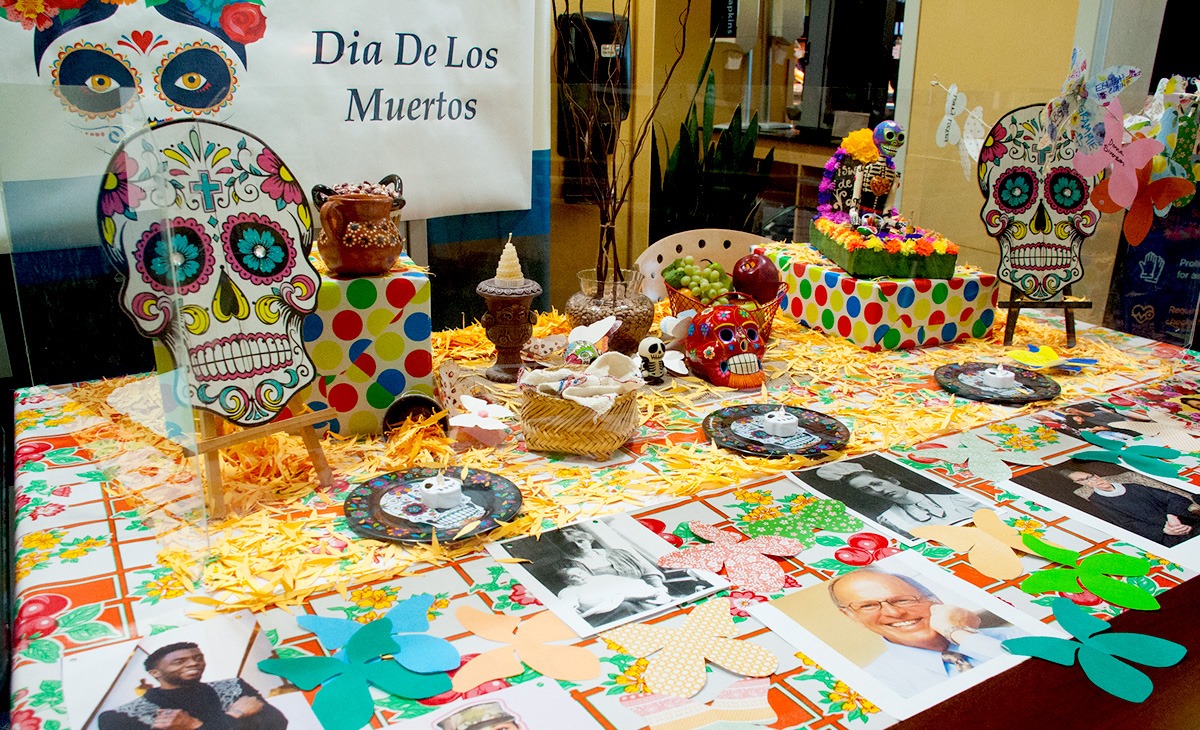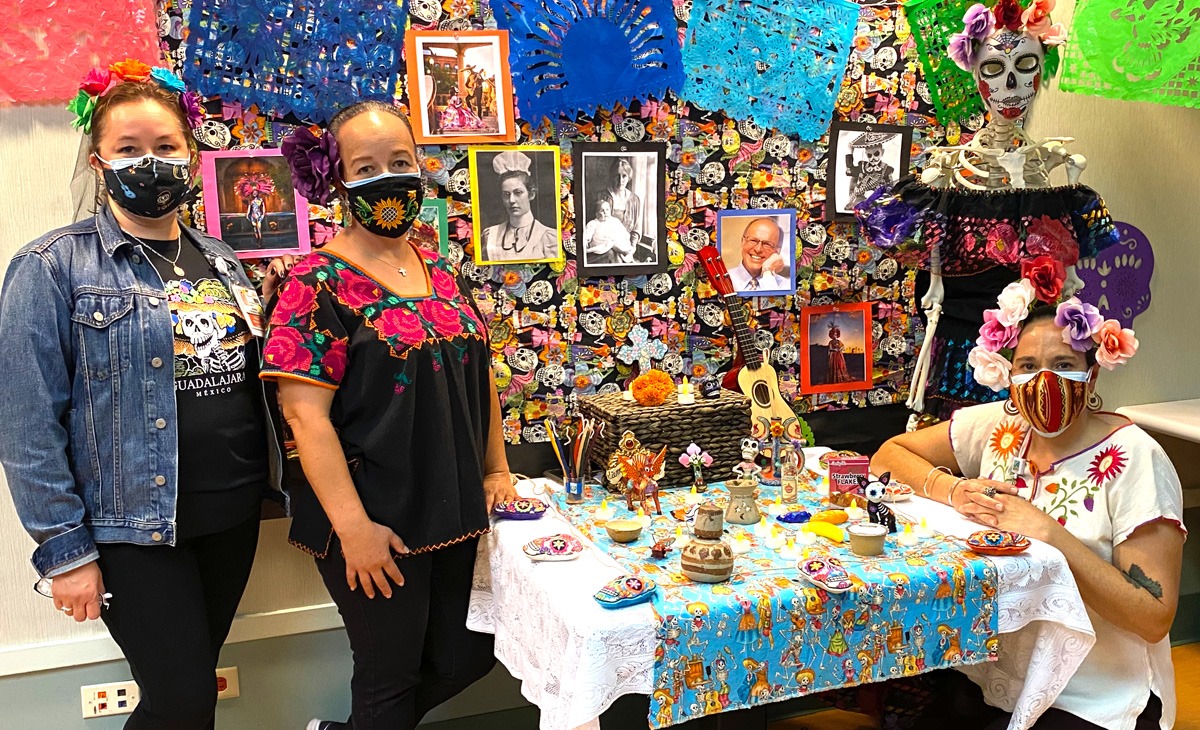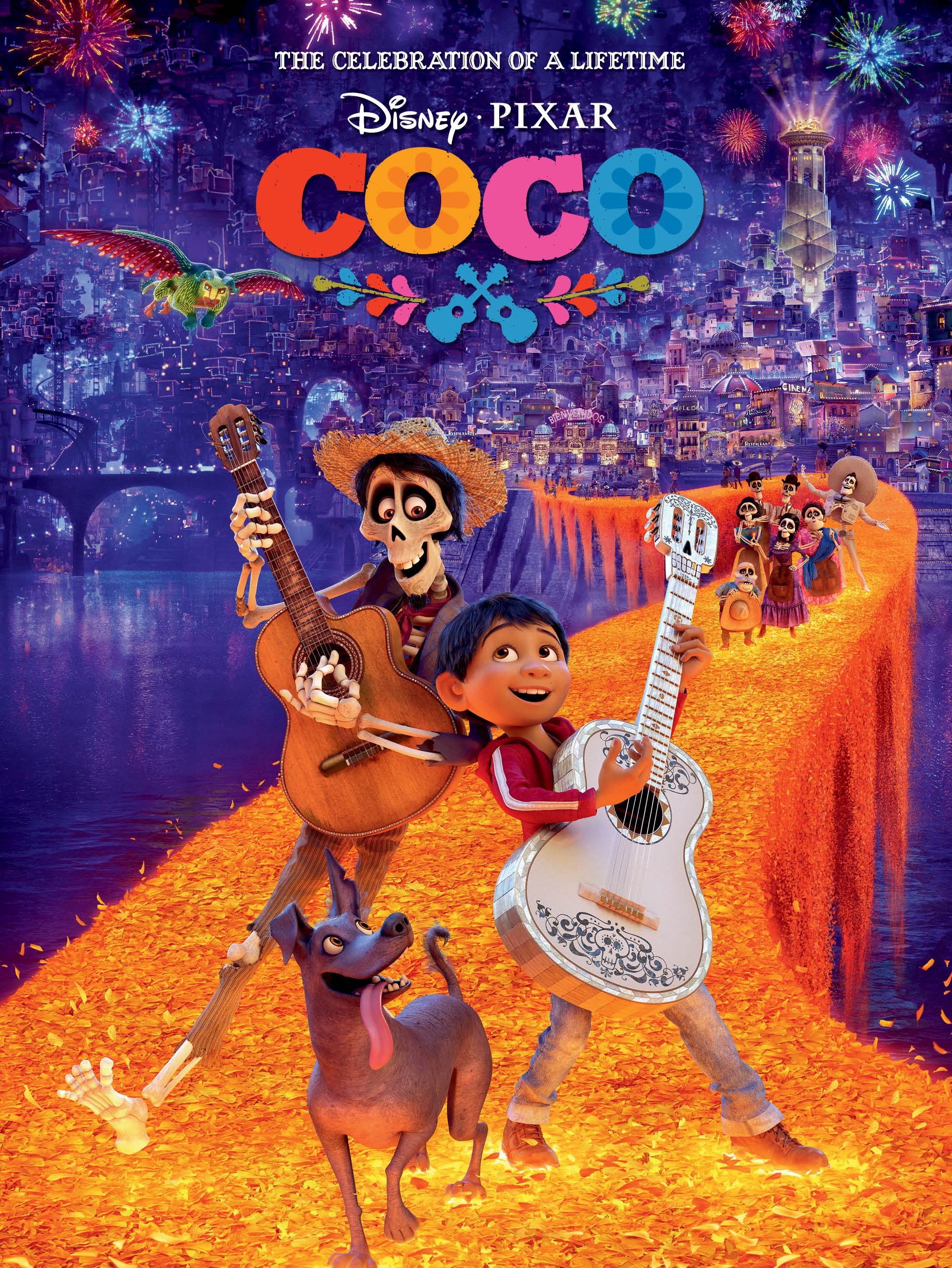Throughout Latin America and the diaspora, this is the time of year when families and communities gather to remember and celebrate their ancestors. It is believed that between November 1st and 2nd the portal between the living and loved ones who have passed is open, allowing for direct contact and communication. It is a time of remembrance and celebration of life and less about sadness and grief. This tradition has its roots in Mesoamerican indigenous cosmovision where death is viewed as a part of the natural cycle of life. This belief system is not rooted in the western mentality of good and bad, rather in the duality found in nature which embodies balance.
We observe these traditions acknowledging that the previous year has been filled with countless challenges and deep losses, including a pandemic, racial violence and injustice, immigration fears, wildfires and climate destruction. Honoring our ancestors especially during this time of uncertainty connects us to their strength and resiliency and reminds us that we are their legacy and that we will get through this difficult time together as a community.
Zoom Backgrounds
Please download any of these virtual backgrounds and add them to your Zoom by following these steps:
- In the Zoom.us desktop client, go to 'Settings' as noted above and select 'Visual Background'.
- Using the (+) icon, upload your new background.
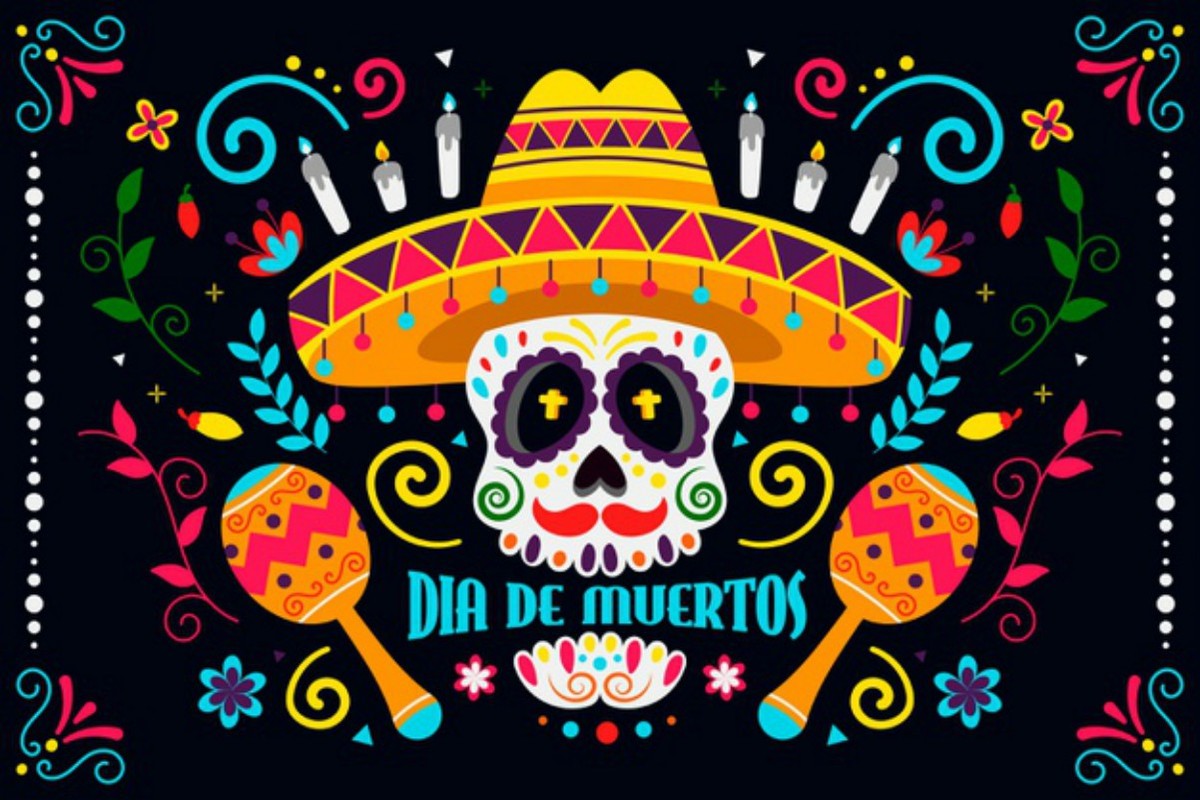
BCH EVENTS
UCSF Virtual Ofrenda
We welcome you to place an object, image, words, and dedicate it to a loved one. Please respect and honor this virtual sacred space. Please do not post a patient unless you are a family member.
Community Altars at BCH - Oakland and Mission Bay
The Community Altars (ofrendas) will be in display at both campuses, located at the Redwood Cafe in BCH Oakland and the main lobby in Mission Bay from Monday, October 31 - Monday, November 7.
We welcome staff to participate in our Community Altar by adding a written dedication to a loved one that has passed away and/or by sharing photos of your dearly departed. You are welcome to honor patients who’ve passed, but please use only their first initial in the dedication. Dedications can be picked up and dropped off in the following locations:
- Oakland: Family Resource & Information Center
- Mission Bay: Front Desk and Center for Families
Please submit only photocopies of the photo since they cannot be returned to you. All dedications will be burned as blessings in a later date.
Special Menu at BCH Oakland and Mission Bay
- Monday, October 31 @ Shorenstein Family Cafe in BCH Mission Bay
- Wednesday, November 2 @ Redwood Cafe in BCH Oakland
Día de los Muertos Sugar Skull Decorating
Friday, October 28, 2022 12pm to 1pm
Parnassus Library, Main Lobby - 530 Parnassus Ave., SF 94143
Join us in the Parnassus Kalmanovitz Library to learn about the holiday and decorate alfeñiques with us! Please note we have scheduled two sugar skull decorating sessions. The sessions will be held at 12pm and then again at 4pm. Please register accordingly on the UCSF Library event calendar.
Dia de los Muertos Festival
Sunday, October 30 | 10 am - 5 pm
International Blvd at Fruitvale Ave., Oakland
UCSF BCH is a proud sponsor of this year's Unity Council’s Annual Oakland Día de Los Muertos Festival, a free, outdoor festival that brings over 100,000 people to the vibrant, culturally-rich Fruitvale neighborhood to enjoy world-class live music, family-friendly games, rides and activities, traditional Latin American artisans, and the stunning altar artistic installations created by community members paying homage to los Muertos. Families across California join us to experience live music, Ballet Folklórico, Aztec dancers and to shop at the local artisan craft stands.
**The 2022 Oakland Dia de los Muertos is a masked event**
UCSF Altar Viewing Reception
Wednesday, November 2 | 12:30 pm - 2 pm
Parnassus Library, Main Lobby - 530 Parnassus Ave., SF 94143
Join us to learn about the holiday and to view Dia de los Muertos altars that will be created by Campus Registered Organizations such as the Chicano Latino Campus Association, Society for the Advancement of Chicanos and Native Americans in Science, Latino Medical Student Association, and UCSF LGBT Resource Center.
Mexican hot chocolate and pastries will be served.
El Show de Colores
Wednesday, November 2 | 12 pm - 12:30 pm
Los invita a la elaboracion de altar de Muertos. Participa y aprende con nosotros de esta celebracion especial a traves de Zoom.
Amour verdadero nos une por siempre en el latido de mi Corazon.
Coco Movie
Disney and Pixar's Coco movie will be showing on our BCH closed-circuit tv. Showtimes include the following:
BCH Mission Bay:
- Tuesday 4;00 pm - Spanish
- Wednesday 4:00 - English
BCH Oakland:
- Wednesday 1:00 -Spanish
- Thursday 1:00- English
BACKGROUND
The celebration of Day of the Dead dates back to pre-colonial traditions observed by several indigenous civilizations such as the Aztecs and Toltecs. Death was not considered the end of existence, but rather another chapter of life, in which they can celebrate the lives of the deceased and honor their memories. Día de los Muertos recognizes death as a natural part of the human experience, a continuum with birth, childhood, and growing up to become a contributing member of the community. In present times, Día de los Muertos combines indigenous rituals with Catholic traditions brought to the region by the Spanish.
Traditions of Día de los Muertos throughout Latin America
Mexico is probably the best known for its Día de los Muertos celebrations which includes pageantry, processions and public display of altars to the dead.
In the Andean regions of Ecuador, Peru and Bolivia families gather together in cemeteries to remember ancestors and loved ones with offerings of food which include: colada morada, a spiced fruit porridge made with Andean blackberry and purple maize and guagua de pan, a bread shaped like a swaddled infant that is sometimes filled with cheese or guava. In Bolivia the Día de las Ñatitas or Day of the Skulls is an ancient Bolivian ritual celebrated on November 9 where skulls of ancestors are decorated with flowers and pampered with cigarettes, coca leaves and other treats to bring good luck to the family.
In Brazil the holiday of Finados is celebrated on November 2, when people go to cemeteries and churches with flowers, candles, and prayer to celebrate in a positive way those who have passed away.
El Salvador’s Day of the Dead is celebrated as the Calabiuza Festival in the town of Tonacatepeque on the first of November where locals dress up with costumes and celebrate native folklore and mythology. Late into the night, locals cook pumpkin and honey for the attendees. The festival ends in the downtown plaza where the best dressed are honored.
Haiti’s version of the Day of the Dead is The Vodou Festival of Fete Gede with most celebrations happening in the first two days of November. Believers get together in the main cemetery of Port-au-Prince and lay out gifts such as homemade beeswax candles, flowers, and bottles of rum stuffed with chili peppers, meant to warm Gede’s bones.
Also celebrated on November 2nd, Nicaraguans’ traditions are similar to those of the rest of Latin America and Mexico. They visit deceased family members at the cemetery and bring flowers, bread, fruit, and candy. People come fully equipped with water-hoes, picks, and shovels to clean the tombstone(s) and surrounding areas.
Similarly, Venezuelans celebrate both Día de Todos los Santos and Día de los Difuntos on November 2nd who go to the cemetery and visit the graves of loved ones, bringing flowers, cleaning their tombstone area and praying.
In Guatemala, the ancestors are celebrated between November 1 (All Saints Day) and November 2 (Día de los Muertos). Families assemble colorful altars in their homes, which include photos, flowers, favorite objects, food and drinks of the departed. Many still visit the cemeteries and sit by the graves to eat in community the traditional food of the season, fiambre. In Sacatepéquez, enormous and vibrantly colorful kites are displayed and flown, creating a symbolic connection to the spirit-world.
MEANING BEHIND SOME OBSERVANCES
Photographs
- Pictures of ancestors and loved ones who have recently passed are often considered one of the most important objects during Día de los Muertos.
- Photos are used to draw deceased relatives into the living realm, so they can find their way to the family altar and reunite with loved ones.
Flowers and Candles
- Cempasúchil (Mexican marigold) - It’s said that the yellow/gold color of the petals holds the warmth of the sun that guides loved ones during this period.
- Candles are also lit on the eve of Día de Todos los Santos (October 31st) to also help guide ancestors.
- Corona de flores (flower wreath) and other flowers shaped into various religious figures can often be seen in cemeteries across El Salvador, where this special day is observed on November 2nd, Día de los Fieles Difuntos.
Calaveras De Alfeñique (Sugar Skull)
- Mainly seen in México, the calaveras or calaveritas are often molded from granulated sugar, meringue powder and water into the shape of the skull. Many Mexicans have a different relationship with this shape and it is not considered scary. They represent the loved ones who have passed and are receiving offerings.
- The sugar symbolizes the sweetness of life.
Food and Drink
- Relatives often leave their loved ones the drinks and food they enjoyed the most. Sometimes the drinks are alcoholic or simply water, juice or favorite soda. It’s said that they get very thirsty when they make their way to the world of the living.
- The food that is left for loved ones varies by region. One popular item in México is pan de muerto, a delicious sweet bread especially made for this occasion.
- In Guatemala, many still visit the cemeteries and sit by the graves to eat the traditional food of the season, fiambre, in community. This special dish is made with cold cuts, pickled vegetables and other foods that keep well without refrigeration for the all-day event. Ayotes en miel (pumpkin with honey) are also a traditional dessert during this time.
Processions, Parades, and Performances
- Regional dances are often performed with dancers often donning painted faces or masks.
- Many towns in Mexico celebrate Día de los Muertos during two days, November 1st (Todos los Santos) and November 2nd (Los Fieles Difuntos). Various colorful processions can be seen through México.
- Many towns also have performers who wear Aztec regalia as a way to remember their ancestors and customs.
- In Sacatepéquez, a town in Guatemala, enormous and vibrantly colorful kites are displayed and flown, creating a symbolic connection to the spirit-world.
- Many towns in El Salvador observe this special day on November 2nd, Día de los Fieles Difuntos, as a more intimate day of remembrance; however, many towns and younger generations are reaching back to their ancestral traditions. Tonacatepeque, a town in El Salvador, celebrates La Calabiuza on November 1st where several people perform as characters from indigenous mythology, like El Cipitío and La Siguanaba.
- And in the Bay Area, following the civil rights era, the Latinx community experienced a cultural renaissance and began the tradition of a public celebration of Día de los Muertos in the early 1970s, representing all communities from throughout Latin America. The largest celebrations continue to take place in San Francisco’s Mission District and Oakland’s Fruitvale District which became home to the large Latinx immigrant community that settled in these areas.
- The celebrations include processions, public altars, art exhibits, food, dance, among other traditions. In the Bay Area, Día de los Muertos has taken-on its own form by bringing together diverse traditions and creating a new cultural significance for Latinx living in the diaspora.
HELPING KIDS GRIEVE
Helping Kids Grieve - Sesame Street in Communities
Coping with the death of a loved one brings enormous challenges for the whole family. Grieving may never completely end, but working through the difficult feelings can become easier with time. Through support, open conversations, and finding ways to keep the person’s memory alive, families can begin healing together.
Be Honest and Concrete: Tips for Talking to Kids About Death by Anya Kamenetz and Cory Turner - NPR, May 28, 2020
Whether it's a family pet or a loved one, every child will experience a death at some point — and their parents will likely struggle to explain it. We revisit the Mr. Hooper episode of Sesame Street, which provides a master class in talking about death and grief with young children.
Responding to Change & Loss toolkit - National Alliance of Grieving Children
The NAGC would like to encourage everyone to prioritize self-care. For many of us, there is grief in the loss of normalcy, and we encourage you to hold space for that. We want you to know you are not alone in the experience, the challenges it may be creating and the feelings that may be surfacing. In response to this, the NAGC (with the support of Alex Cares for Grieving Youth®) has released the booklet "Coping with Change and Loss" to be shared freely with families.
Supporting Students Coping with Grief - MSW Degrees
The informatiomal guidebook provides research- and expert-driven information and tips on how grief affects children and young adults and how education professionals can help them navigate their feelings and remain successful in school.
Online Resources
- Parenting - Offers a wide array of resources for parents.
- Parmenter Foundation - Provides hope and support for our community members who are grieving or in need of compassionate end-of-life care.
- Courageous Parent's Network - A destination created by families, for families, to support, guide and strengthen them as they care for very sick children.
- What's Your Grief? - Their mission is to promote grief education, exploration, and expression in both practical and creative ways.
- Alliance for Grieving Children - Their mission is to raise awareness about the needs of children and teens grieving a death and provide education and resources to anyone who wants to support them.
- Children's Grief.net - Helping children with grief and trauma.
- Widowed Parent - The Widowed Parent project is committed to supporting widowed mothers and fathers with children in the home.
Suggested Reading List: For Adults Helping Children Grieve
- Childs-Gowell, Elaine, Good Grief Rituals: Tools for Healing
- Coles, Robert, The Spiritual Life of Children
- Doka, Kenneth J., Children Mourning: Mourning Children
- Fitzgerald, Helen, The Grieving Child: A Parent's Guide
- Fox, S., Helping Groups of Children When a Friend Dies
- Fry, Virginia Lynn, Part of Me Died, Too: Stories of Creative Survival Among Bereaved Children and Teeneagers
- Furman, Erma, A Child's Parent Dies
- Goldman, Linda, Life and Loss: A Guide to Helping Grieiving Children
- Gordon, Audrey and Klass, D., They Need to Know: How to Teach Children About Death
- Grollman, Earl A., Talking About Death: A Dialogue Between Parent and Child
- Grollman, Earl A., Bereaved Children and Teens
- Huntley, Theresa, Helping Children Grieve: When Someone They Love Dies
- Jarratt, Claudia Jewett, Helping Children Cope with Separation and Loss
- Krementz, Jill, How It Feels When a Parent Dies
- Kroen, William C., Helping Children Cope with the Loss of a Loved One: A Guide for Grownups
- Kubler-Ross, Elizabeth, On Children and Death
- LeShan, Eda, Learning to Say Goodbye: When a Child's Parent Dies
- Lord, Janice Harris, No Time for Goodbyes: Coping with Sorrow, Anger and Injustice after a Tragic Death
- Lord, Janice Harris, Beyond Sympathy: How to Help Another Through Injury, Illness or Loss
- Menten, Ted, Gentle Closings: How to Say Goodbye to Someone You Love
- Schaefer, D. & Lyons, C., How Do We Tell the Children? Helping Children Understand and Cope When Someone Dies
- Stein, Sara Bonnett, About Dying: An Open Family Book for Parents and Children Together
- Trozzi, Maria, Talking with Children About Loss: Words, Strategieis and Wisdom to Help Children Cope with Death, Divorce and other Difficult Times
- Wolfelt, A., Helping Children Cope with Grief
- Worden, J. William, Children and Grief: When a Parent Dies
- Ziegler, Robert G., Homemade Books to Help Kids Cope
VIDEOS
